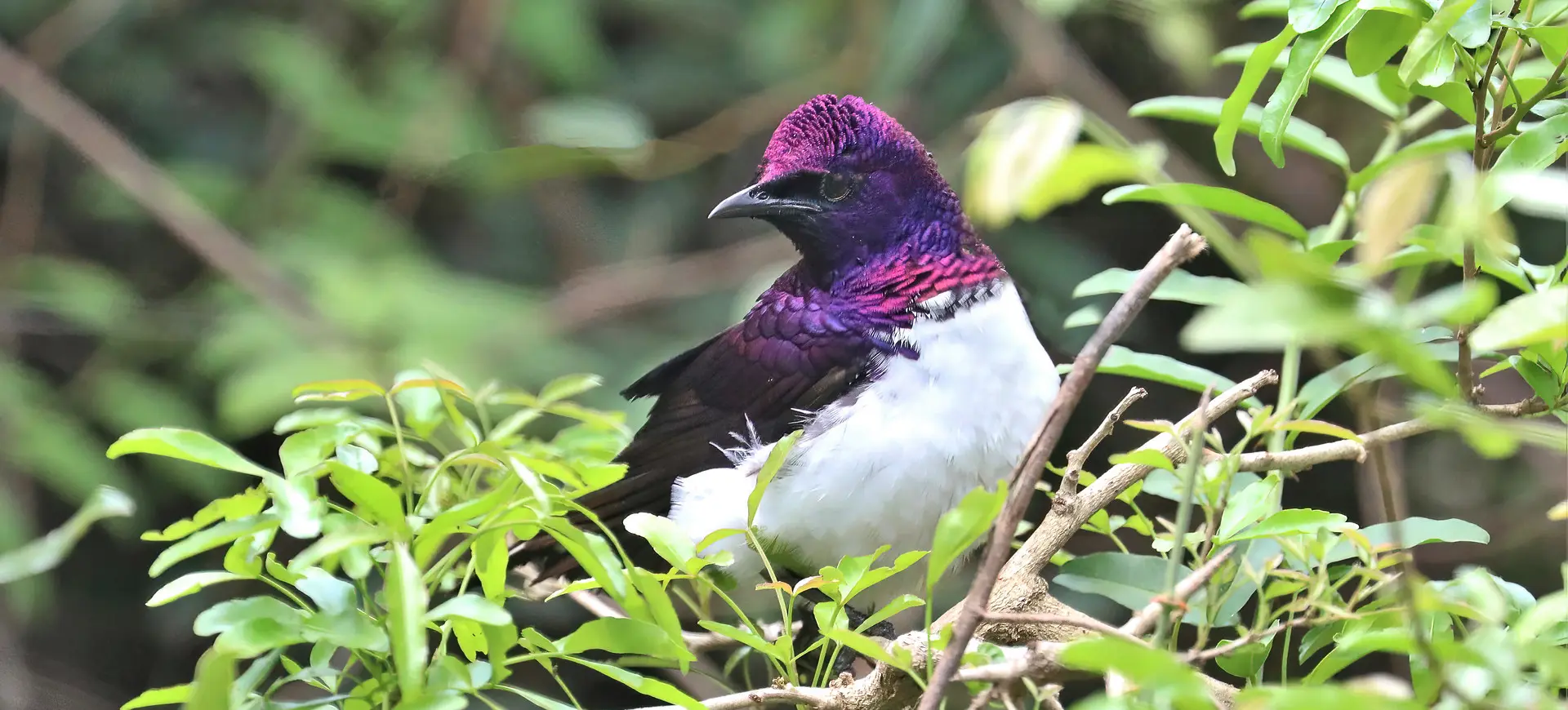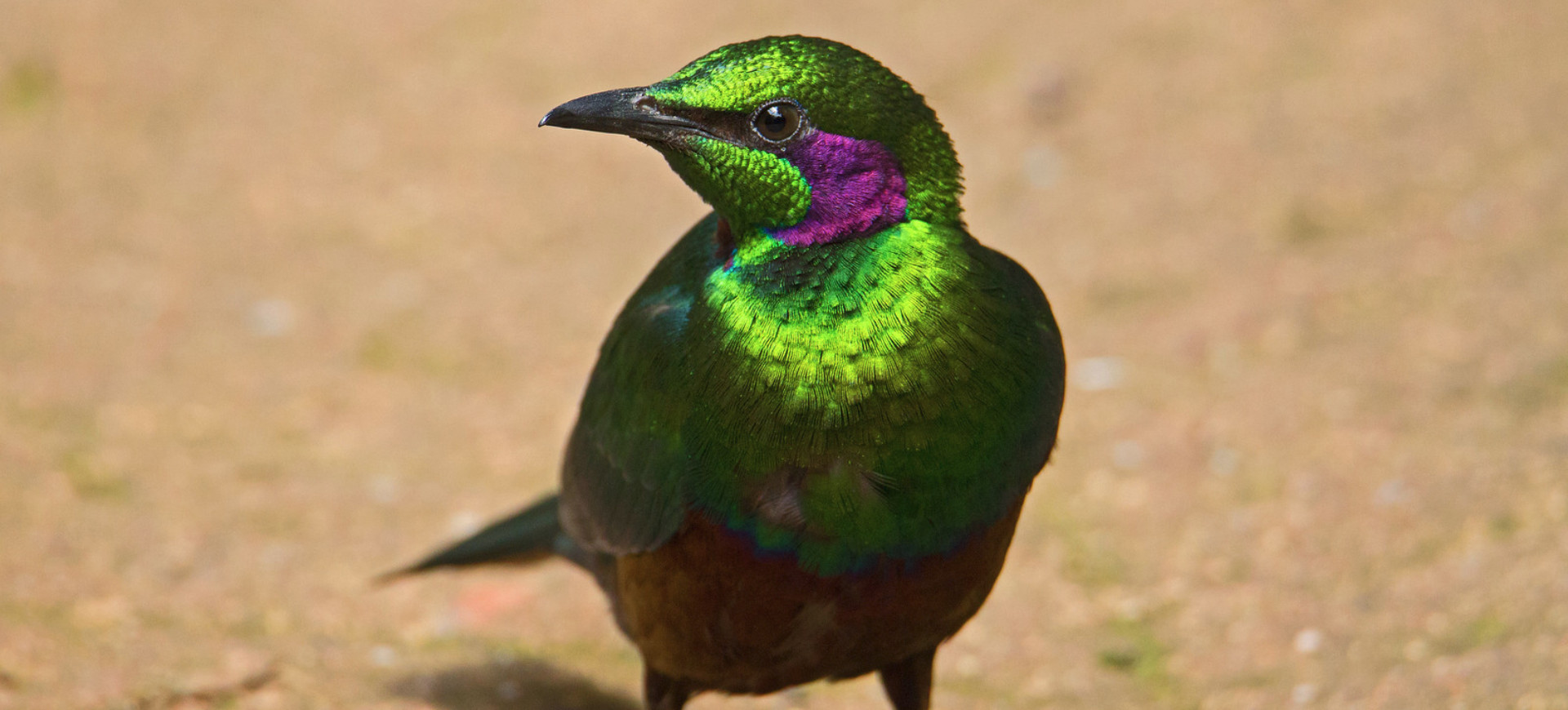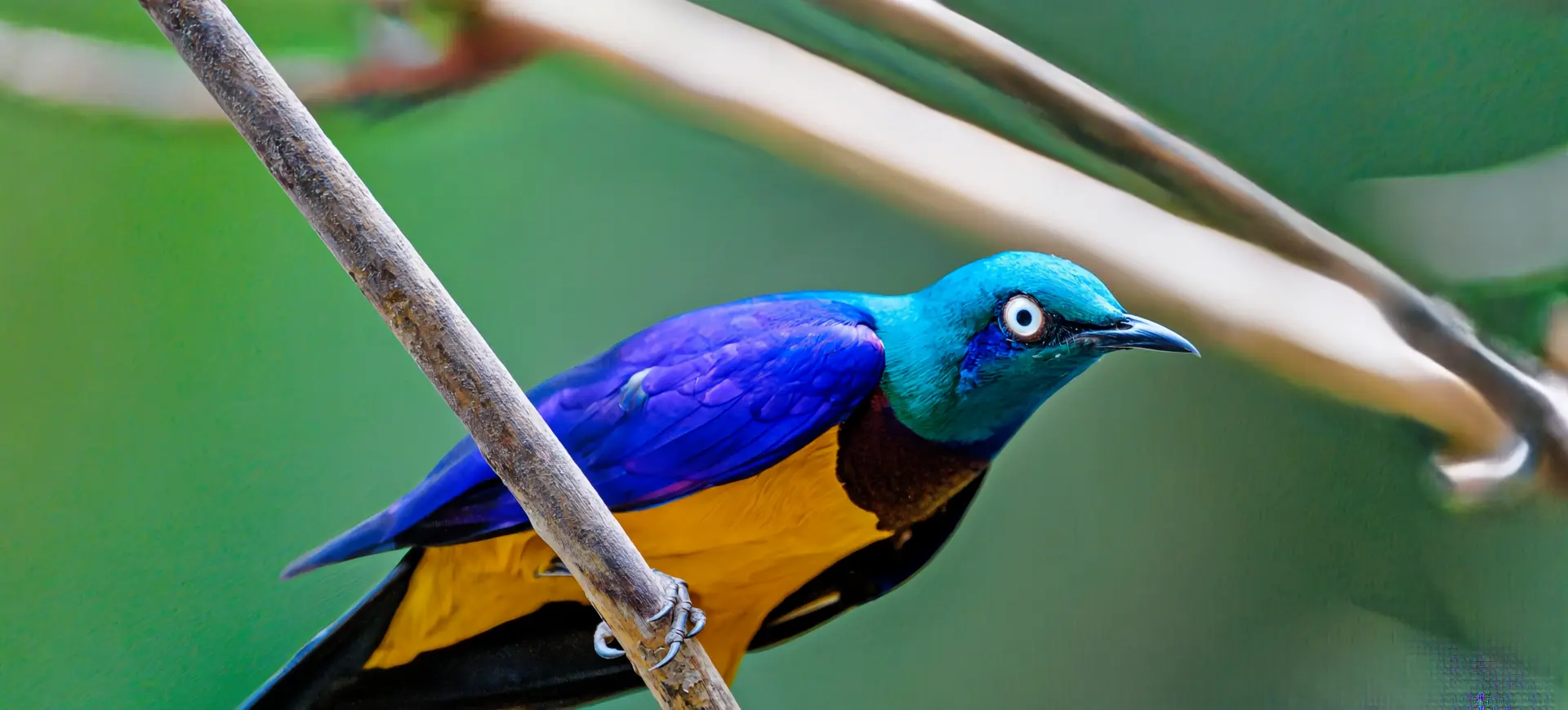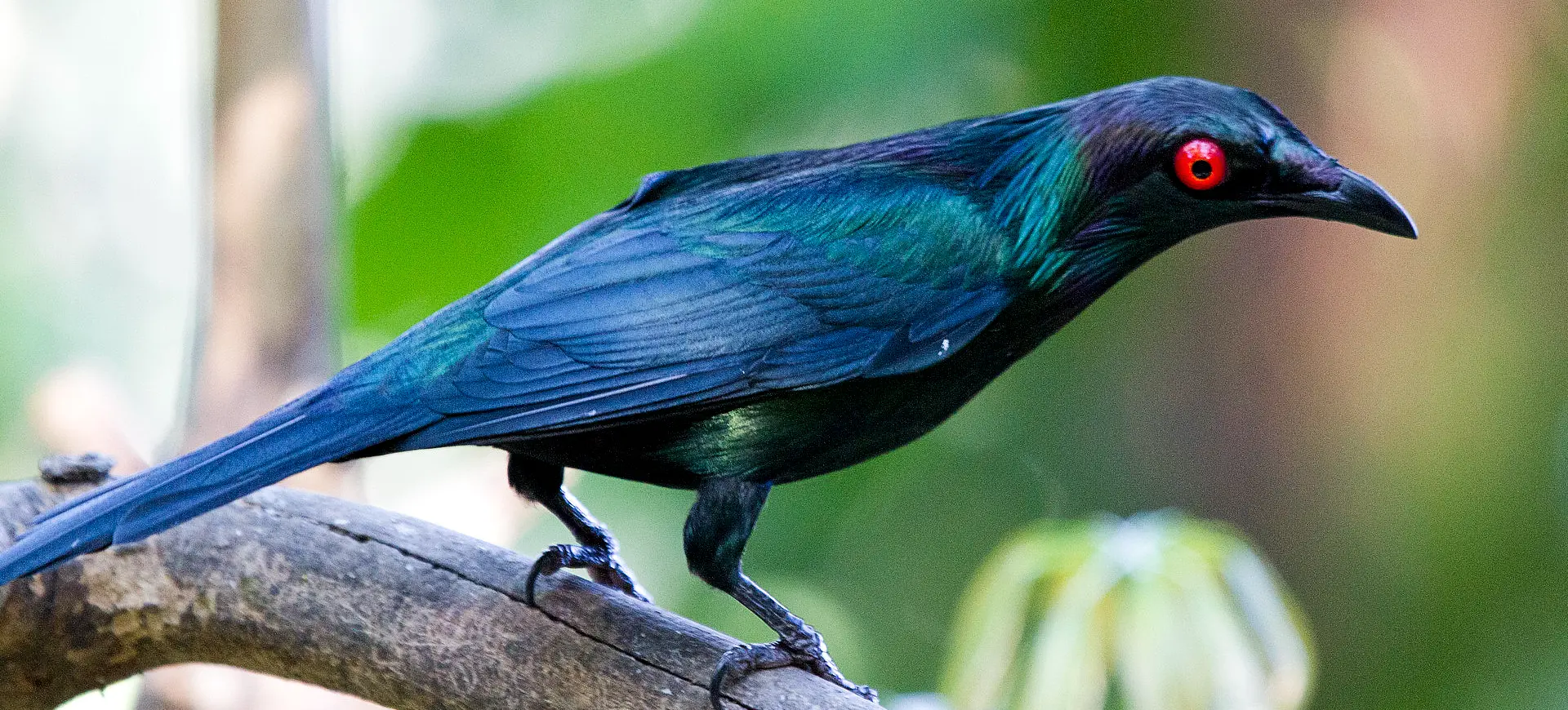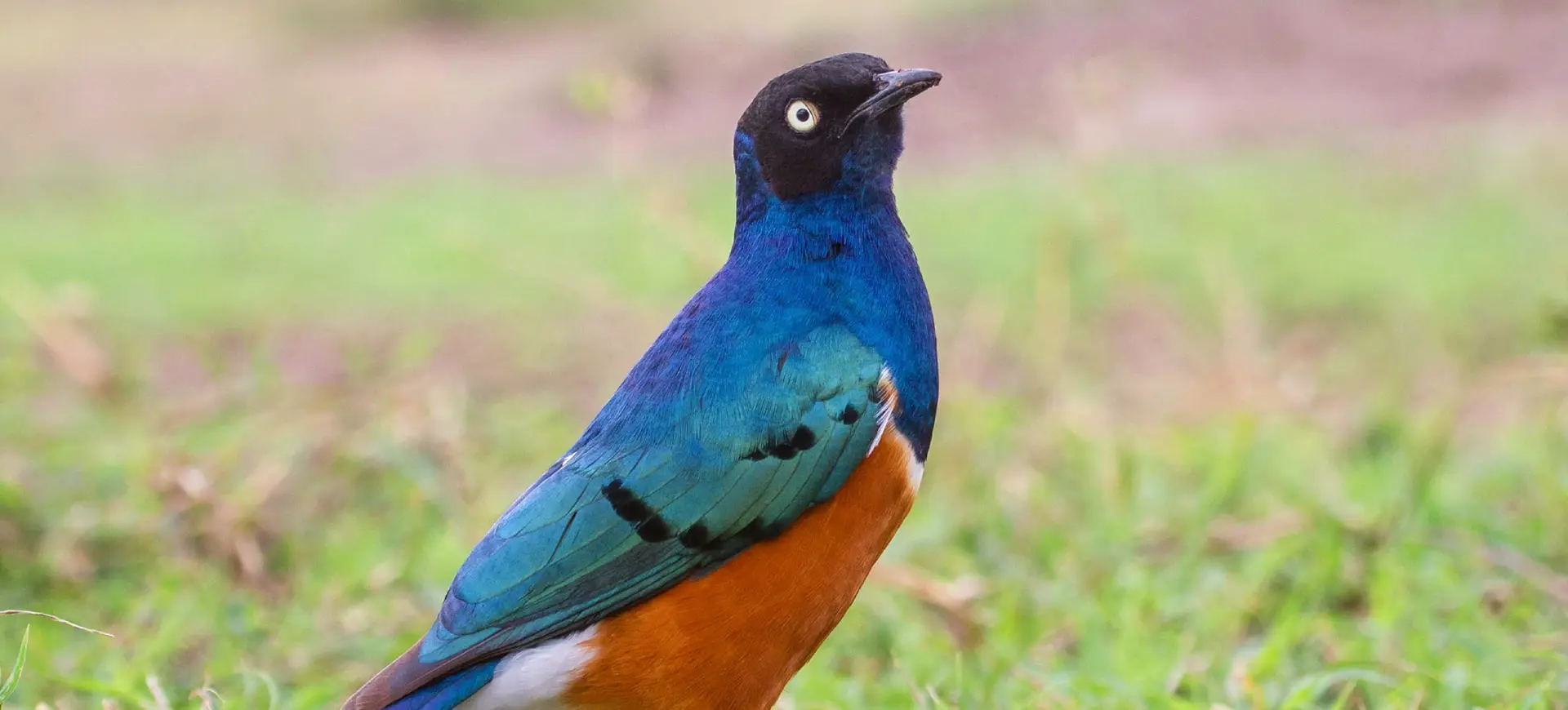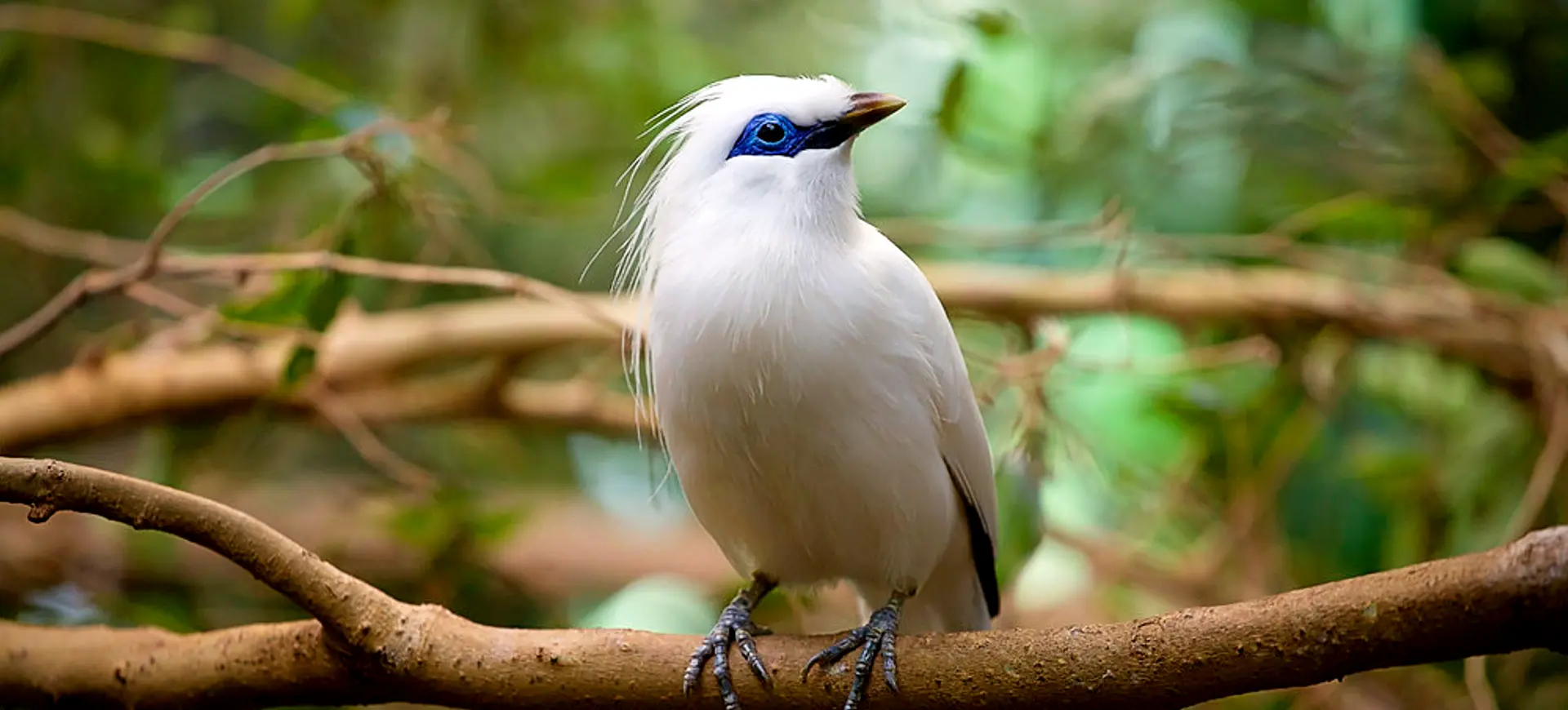Overview
The Golden-crested Myna is a medium-sized bird known for its striking appearance, characterized by its glossy black plumage and a vibrant yellow crest on its head. It is native to Southeast Asia, inhabiting various environments, including forests, plantations, and urban areas. The bird belongs to the starling family, Sturnidae and is closely related to other mynas and starlings. Its scientific name is Ampeliceps coronatus.
The bird measures approximately 25 to 28 cm long and has a robust body, strong wings, and a short tail. The most distinguishing feature is its golden-yellow crest, which is prominent and eye-catching. This crest adds color to its otherwise black body, making it easily identifiable in its native habitats.
The Golden-crested Myna is an omnivorous bird, feeding on a diverse range of foods. Its diet includes fruits, nectar, insects, and small vertebrates. The bird is highly adaptable and can thrive in a variety of habitats, which contributes to its relatively widespread distribution in its native regions.
Taxonomy
Kingdom
Phylum
Class
Order
Family
Genus
Species
Type
Physical Description:
The Golden-crested Myna has a predominantly black body that exhibits a glossy sheen, especially when viewed in sunlight. Its eyes are a bright yellow, which matches the color of its striking crest. The beak and legs are black, providing a uniform look broken only by the golden crest on its head.
Adult males and females are similar in appearance, making it difficult to distinguish between them based on physical characteristics alone. The bird’s robust build and strong wings allow it to be agile in flight. Its beak is strong and well-suited for its omnivorous diet, capable of handling plant material and small animals.

Lifespan: Wild: ~10 years || Captivity: ~15 years

Weight: Male & Female: 2.8–3.5 oz (80–100 g)

Length: Male & Female: 8–9 inches (20–23 cm)

Wingspan: Male & Female: 14–16 inches (35–40 cm)
Characteristic:
Native Habitat:
The Golden-crested Myna is native to Southeast Asia, particularly Thailand, Myanmar, and parts of India. It prefers forested areas but is highly adaptable and can be found in plantations and gardens. The bird is not restricted to lowland forests and has been observed at higher elevations.
It is also not uncommon to spot a Golden-crested Myna in urban settings, where it takes advantage of abundant food sources and nesting sites. Despite its adaptability, the bird faces threats from habitat loss due to deforestation and agricultural expansion.
Climate Zones:
Biomes:
WWF Biomes:
Biogeographical Realms:
Continents:
Diet:
Diet & Feeding Habits:
The Golden-crested Myna is an omnivore with a diet that includes a variety of fruits, insects, and small vertebrates. It is particularly fond of berries and can often be seen foraging in trees that are in fruit. The bird is also known to consume nectar from flowering plants, using its specialized tongue to extract the sweet liquid.
In addition to natural food sources, the Golden-crested Myna is known to take advantage of human-provided food in urban and suburban settings. Its adaptability in diet allows it to thrive in various habitats, including those altered by human activity. This adaptability contributes to its relatively stable population numbers.
Mating Behavior:
Mating Description:
The Golden-crested Myna is known to be monogamous, forming long-term pair bonds. During the breeding season, males and females participate in nest-building, usually choosing tree branches or ledges for their nests. The nests are constructed using twigs, leaves, and other plant material.
Eggs are laid in clutches of 2 to 4, and both parents share the responsibility of incubation. After hatching, the young are fed by both parents until they are old enough to fledge. The family unit often stays together after the young have fledged, foraging and moving as a group.
Reproduction Season:
Birth Type:
Pregnancy Duration:
Female Name:
Male Name:
Baby Name:
Social Structure Description:
The Golden-crested Myna is a highly social bird, often found in small flocks. It engages in communal activities like preening and feeding, which helps strengthen social bonds within the flock. During the breeding season, pairs break off from larger groups to focus on raising their young. Once the breeding season ends, they may rejoin larger groups or remain as a pair.
The species is known for its strong social bonds, not just between mating pairs but also among individuals in a group. These bonds are reinforced through mutual preening and vocalizations. The Golden-crested Myna is also known for its loud, raucous calls, which serve as a form of communication and as a territorial display.
Groups:
Conservation Status:
Population Trend:
The Golden-crested Myna is currently listed as Least Concern by the IUCN, indicating that it is not immediately threatened with extinction. However, the species faces challenges from habitat loss due to deforestation and the illegal pet trade. In some regions, it is also hunted for its feathers, although this is not considered a significant threat.
Conservation efforts are focused on habitat preservation and the establishment of protected areas. These measures aim to maintain stable populations and ensure the long-term survival of the species. Public awareness campaigns and legal protections also contribute to conservation efforts. Ongoing research and monitoring are essential for assessing the effectiveness of these measures.
Population Threats:
The primary threats to the Golden-crested Myna include habitat destruction due to deforestation and the illegal pet trade. While hunting is not considered a significant threat to the species, it does contribute to localized population declines. Climate change poses a long-term threat by altering the availability and quality of habitats.
Conservation efforts aim to mitigate these threats through habitat preservation and legal protections. Establishing protected areas and reserves provides safe havens where the species can breed and forage without immediate threats from human activities. Ongoing research and monitoring are essential for assessing the effectiveness of these measures.
Conservation Efforts:
Conservation efforts for the Golden-crested Myna are primarily focused on habitat preservation. Establishing protected areas and reserves provides the species with safe habitats to breed and forage. Legal protections are also in place to regulate hunting and protect critical habitats.
Public awareness campaigns are another important aspect of conservation efforts. Educating local communities about the importance of preserving natural habitats and the role of the Golden-crested Myna in the ecosystem can contribute to more effective conservation strategies. Ongoing research and monitoring are essential for assessing the effectiveness of these measures and adapting strategies as needed.
Additional Resources:
Fun Facts
- The Golden-crested Myna has a striking yellow crest, rare among birds in its family.
- Despite its vibrant appearance, the bird has a relatively subdued call, often described as a series of whistles and clicks.
- The Golden-crested Myna is an excellent mimic and can imitate the calls of other birds and even some mechanical sounds.
- It is one of the few bird species observed using tools, such as twigs, to extract insects from crevices.
- The bird is considered a symbol of good luck in some cultures within its native range.
- Golden-crested Mynas are known to bathe in dew collected on leaves, which is thought to help maintain their glossy plumage.
- They also participate in “anting,” where the bird allows ants to crawl over its body, which is believed to help remove parasites.
- The Golden-crested Myna is a strong flier capable of covering long distances for food.
- Despite its adaptability, the bird prefers to nest in natural settings, often choosing tree branches over artificial structures.
- The Golden-crested Myna is one of the few species in its family that is not considered a pest in agriculture, largely due to its varied diet.




